Crafting Butterfly Candles: A Journey in Wax Artistry

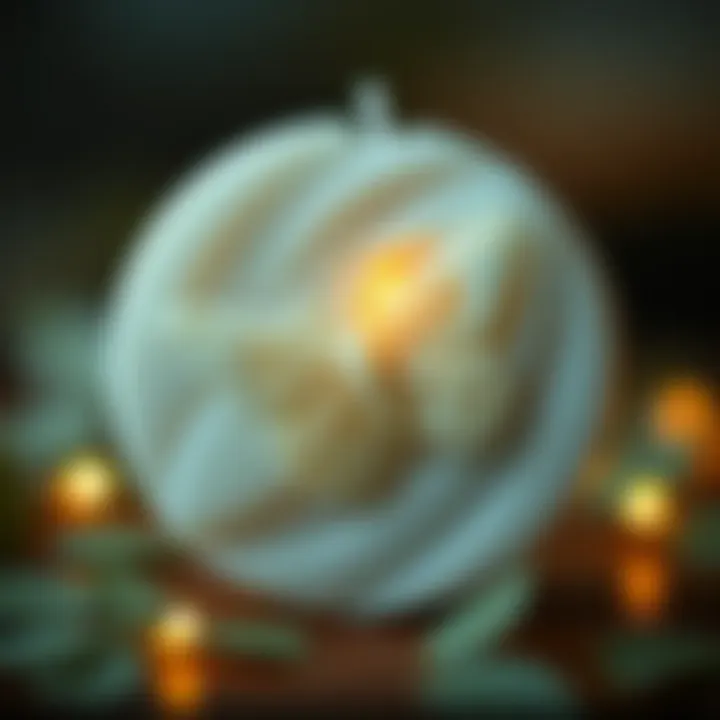
Intro
The craft of candle making transcends mere functionality; it embodies a form of artistic expression that intertwines creativity, history, and modern trends. Among various forms of candle designs, butterfly-shaped candles stand out, showcasing intricate patterns that captivate the eye and stir the imagination. Exploring the intricacies of butterfly candle molds reveals not just their beauty but also their significance in the broader context of candle artistry. In this piece, we will dissect both the traditional and contemporary aspects of these molds, looking at how they enhance design possibilities while charting a creative journey.
The significance of these molds spans centuries. Historically, candles served as vital light sources, evolving into symbols of celebration, spirituality, and home warmth. Today, the butterfly candle mold adds a dynamic layer of elegance and sophistication, providing artisans—from novices to seasoned mentors—with inspiration to express visions through wax. This exploration aims to offer insight into everything from selecting the right materials to mastering techniques that bring the delicate beauty of butterfly shapes into tangible form.
Fashion Trends
In the world of candle-making, recent trends illuminate the desire for unique and aesthetically pleasing creations. Butterfly candles, in particular, resonate with seasonal inspirations and revitalized traditional styles.
Latest Seasonal Trends
As seasons change, so do the colors and motifs that inspire candle makers. Currently, the focus is on soft pastels for spring and vibrant hues for summer. These color palettes work beautifully with butterfly molds, creating ethereal, whimsical pieces perfect for any occasion. Incorporating botanical elements such as dried flowers or herbs within the candle wax may add a unique touch. Moreover, using eco-friendly materials has become paramount; sustainable waxes are not only kinder to the planet but also contribute to the overall aesthetic appeal.
Iconic Styles Revived
With a nod to nostalgia, vintage butterfly designs have made a comeback. There’s a notable revival of classic candle-making techniques. Artisans are now reinterpreting traditional molds, marrying the elegance of past eras with modern tastes. This fusion results in candles that evoke sentiments of yesteryear yet remain fresh and relevant today. Elements such as textured surfaces and intricate detailing are often highlighted, producing unique statements in any setting.
"Incorporating historical techniques into modern crafting not only respects traditions but also breeds innovation."
Crafting Techniques
Producing butterfly candles is more than simply pouring wax into a mold. It’s an experience that involves careful consideration of various elements, from choosing the right wax type to mastering the art of pouring and layering. Here are some essential techniques to grasp:
- Wax Selection: Paraffin, soy, and beeswax each have unique properties. Soy is favored for its eco-friendly nature, while paraffin often produces crisp details in designs.
- Mold Preparation: Ensuring your mold is clean and prepped minimizes problems during release. A light application of mold release spray can work wonders.
- Pouring Techniques: Pouring at the right temperature and speed is vital. Too hot, and the mold may distort; too cool, and the wax may not capture the fine details.
- Finishing Touches: After demolding, consider enhancing the candle with color, scent, or decorations that resonate with the butterfly theme.
Tips for Successful Crafting
To truly excel in crafting butterfly candles, consider these helpful tips:
- Experiment with colors that reflect the butterfly’s natural beauty—blues, yellows, and greens are particularly engaging.
- Before committing to larger batches, practice with smaller quantities to perfect your technique.
- Document your processes. Each batch can reveal lessons learned, contributing to future success.
By focusing on these facets, artisans can unlock the full potential of butterfly molds, creating pieces that are not just candles, but works of art that tell a story and elevate spaces.
Summary
In summary, engaging with butterfly candle molds encompasses both the historical richness of candle making and the ongoing evolution within the craft. It offers the opportunity to explore various techniques and styles while encouraging personal expression. Whether you’re lighting up your home or crafting the perfect gift, these candles embody elegance and creativity that delight both maker and recipient alike. As we journey through this comprehensive guide, one thing becomes clear: butterfly candles are much more than wax—they are a celebration of artistry.
To delve deeper into the art of candle making, consider exploring resources such as Wikipedia, Britannica, and forums like Reddit to connect with a community passionate about this vibrant craft.
Prolusion to Candle Making
Candle making is more than just a craft; it’s a dance of art and science, blending creativity with practical skill. Understanding the foundation of candle making lays the groundwork for creating masterpieces such as the butterfly candle mold. Artists and hobbyists alike delve into this practice, attracted not just by the final product but the entire process involved. Candles illuminate both spaces and emotions, rendering them fundamental in various cultural and personal contexts.
Historical Overview
Historically, candles have been a beacon of light through the ages, tracing back to ancient civilizations. The Egyptians crafted them from papyrus and melted animal fat. Meanwhile, Romans made beeswax candles, a far cry from today’s offerings. The craft evolved with the advent of stearin and paraffin wax in the 19th century, which heralded a new era for candle making. Each epoch brought specific materials, techniques, and significance to candles—ranging from religious to romantic contexts. In modernity, the candle industry has witnessed a resurgence, becoming a trend within home decor and wellness-focused practices.
The rise of scented and decorative candles has also pushed the boundaries of design, creating an invitation for designers to explore intricate shapes. One such innovation was the butterfly candle mold—capturing the elegance and graceful contours of a butterfly, merging nature’s beauty with the art of candle creation.
Current Trends in Candle Crafting
Today, the candle crafting landscape is marked by innovation and a desire for personalization. More creators are opting for eco-friendly materials, considering sustainability in both the wax and wicks used, often selecting soy or beeswax over paraffin. There's a growing enthusiasm for handmade products, leading to soaring interest in unique shapes, including the butterfly mold, which resonates well with consumers looking for both artistic and functional design.
Moreover, social media platforms have taken the craft community by storm, serving as vibrant spaces where crafters share their candle making journeys, showcase finished creations, and exchange tips. This connectivity fosters a spirit of collaboration, bringing together stylists, designers, and enthusiasts—all eager to experiment with innovative techniques, such as embedding herbs or dyes.
As we delve deeper into the craft of candle making, recognizing these historical contexts and current trends elevates our understanding of the butterfly candle mold's allure and importance in today’s artistic candle realm.
Understanding Candle Molds
Candle molds are crucial in the craft of candle making, serving as the foundation for shape and design. They determine how the final product will look, influencing both aesthetic appeal and functionality. Choosing the right mold is essential for achieving the desired results, and that’s where understanding the different types of molds available can make a world of difference.
When one is embarking on the adventure of candle crafting, the significance of the molds comes into sharper focus. With a variety of types to select from, each mold can bring its own flavor to the process. It's not just about making candles; it’s about creating lasting impressions through intricate designs.
Craftsmen and hobbyists alike have their preferences, influenced by factors such as durability, ease of use, and the kind of finished product they aim to achieve. By exploring the different mold categories, candle makers can unlock a treasure trove of possibilities.


Types of Candle Molds
Metal Molds
Metal molds are often lauded for their ability to retain fine details in intricate designs. One notable aspect of metal molds is their durability; they can withstand high temperatures often encountered in candle making without warping or deteriorating. This makes them a very favorable option for anyone keen on crafting exquisite candles with fine features.
A unique feature of metal molds is their ability to produce a solid finish that can be both glossy and smooth. This attention to detail makes them especially popular for professional-grade candles or decorative pieces. However, they can pose difficulties when it comes to releasing the candle once it has cooled, as the materials can stick to the mold if not properly lubricated.
Plastic Molds
Plastic molds present another interesting option in the candle crafting toolkit. They are typically lighter and easier to handle compared to metal molds, making them a user-friendly choice for beginners. An essential characteristic of plastic molds is their affordability, which opens up opportunities for experimentation without a hefty investment.
However, there’s a drawback to consider. Plastic may not be as heat-resistant as other materials, and exposure to high temperatures can cause the mold to warp, affecting the final product. Despite this, their convenience and easy cleanup can not be overlooked, often making plastic molds a go-to for quick and simple projects.
Silicone Molds
Silicone molds have surged in popularity among candle makers for several compelling reasons. One prominent characteristic is their flexibility, allowing for effortless release of the candle once it’s set. This ease of release is a game changer, especially for complex shapes like a butterfly, where intricate details play a significant role.
What sets silicone apart is its capability to handle varying temperatures, thus creating a safe environment for melting wax. Moreover, silicone molds can be used repeatedly without losing shape or functionality, making them a durable investment in the long run. The cost might be higher initially, but the benefits gained through usability are significant.
Advantages of Using Molds
The advantages of using molds in candle making cannot be understated. First off, molds allow for uniformity in candle size and shape, which can be particularly important for those looking to produce large batches. Additionally, they provide an opportunity to explore creativity. Molds can be chosen based on the occasion, theme, or personal style, so each candle can be uniquely tailored.
Using molds also enhances the overall quality of the candle. A well-made mold contributes to even melting and burning, ensuring longer-lasting and better-performing candles. With an array of options available, understanding the purpose and benefits of different molds can elevate a candle maker's craft to new heights.
The Butterfly Candle Mold Defined
Candle making is both an art and a science, and the butterfly candle mold stands as a significant tool in this creative process. This section delves into what makes the butterfly mold unique, outlining its design elements and the materials employed in its construction. Understanding these components not only enhances the crafting experience but also allows artisans to appreciate the intricacies involved in their creations.
Design Characteristics
The butterfly candle mold features a distinctive, symmetrical design that inspires creativity and innovation. Its elegant contours and delicate wings create a beautiful display when the candle has set.
A few essential design characteristics include:
- 3D Embellishment: With depth and dimension, these molds capture every fine detail, reflecting how it might appear in nature, making each candle a statement piece.
- Ease of Use: The design is straightforward, which suits both novice and experienced candlemakers. Pouring wax into the butterfly mold requires little more than a steady hand and a bit of patience.
- Versatility: Butterfly molds can cater to various occasions, from whimsical birthday parties to elegant weddings, allowing for diverse color palettes and fragrance combinations.
The butterfly mold's aesthetic isn’t just for looks; it also plays a role in how the candle burns. Its shaped body can influence how the wax melts, creating varied burn patterns and durations.
Materials Used in Butterfly Molds
The choice of materials in crafting the butterfly mold is pivotal. It can directly affect the quality of the candles produced. There are two popular materials often used in these molds: silicone and metal.
Silicone for Flexibility
Silicone molds are a favorite in candle making due to their flexibility. This flexibility allows for easy removal of the candle once it has cooled and set. A few key characteristics of silicone molds include:
- Non-Stick Surface: This feature ensures that candles can be effortlessly popped out without risking damage, preserving the delicate details of the butterfly design.
- Tolerance to Temperature: Silicone can withstand a wide range of temperatures, making it perfect for pouring hot wax without warping or losing shape.
While flexible molds are convenient, they sometimes lack the rigidity to support heavier wax. Under certain conditions, they may collapse when pouring larger amounts of heavy materials, so it is important to use appropriate wax types that suit these molds.
Metal for Detail Retention
Metal molds are known for their robustness and ability to retain fine detail. When it comes to producing intricate designs like butterflies, metal molds shine in several ways:
- Sharp Details: Metal molds enable precise detailing, creating sharp, defined shapes that make the candles look polished and professional.
- Durability: These molds can withstand repeated use and are less likely to suffer from wear and tear compared to silicone counterparts, ensuring longevity in the crafting process.
However, metal molds also have some downsides. They conduct heat efficiently, which can lead to uneven cooling of the wax and may require more careful handling. Candle makers need to be mindful of the potential for overheating and implement timing strategies to maintain quality.
The butterfly candle mold exemplifies the marriage of design sophistication and practical functionality, ensuring that candle makers can express their artistic flair while creating lasting products.
Crafting with Butterfly Candle Molds
Crafting with butterfly candle molds introduces a spectrum of artistic possibilities. The charm of these molds isn’t just in the final product but also in the intricacies of the process. Each step you take in crafting these butterfly candles brings forth a unique experience—one that combines creativity, patience, and a touch of technical skill. Understanding how to effectively utilize these molds ensures that you achieve designs that are both visually appealing and structurally sound.
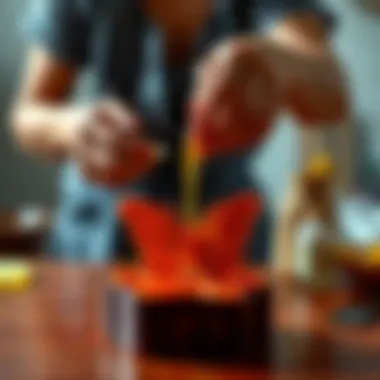
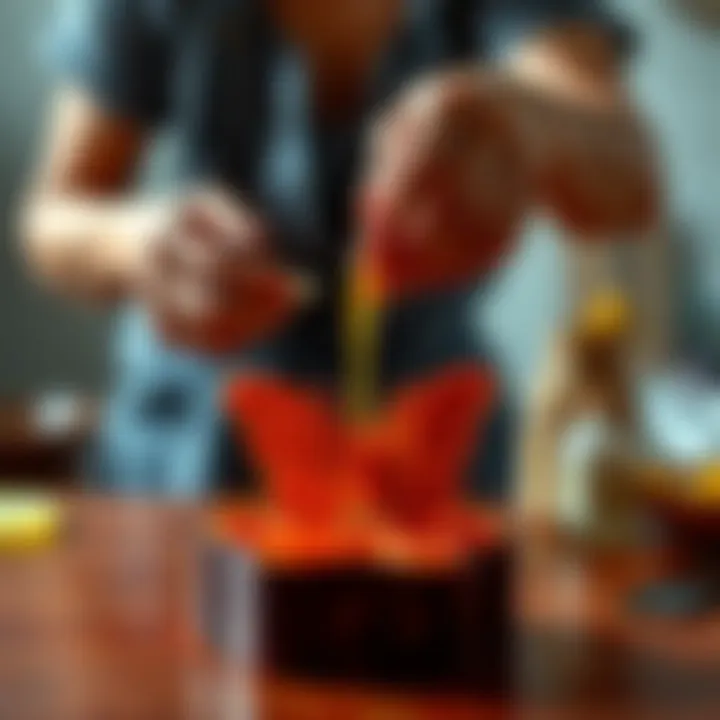
Step-by-Step Guide to Candle Making
Preparing Materials
Before diving into candle making, gathering the necessary materials is crucial. This initial step lays the groundwork for the crafting process. You will typically need high-quality wax, fragrance oils, wicks, and your butterfly candle mold. Each component plays a significant role in the quality of the final candle.
For instance, using paraffin wax is a popular choice due to its dependable burning properties. However, soy wax is often favored for its eco-friendliness and clean burn. While both options have their merits, soy wax is more sustainable and has gained traction among artisan crafters.
The selection of fragrance oils should not be overlooked either. Essential oils can offer natural scents, but synthetic fragrances can often provide a stronger aroma throw. Each choice directly impacts your crafting outcome.
Melting Wax
The melting phase is where science meets art. Achieving the right temperature is essential; too low and the wax may not melt fully, too high and you risk damaging the wax's quality. Generally, a double boiler setup works best to control temperature. Paraffin typically melts between 130°F and 150°F, while soy wax requires slightly higher temperatures.
Having precise control over the melting process ensures a smooth pour without bubbles or inconsistencies. This stage is where you can also incorporate your fragrance oil—generally when the wax reaches about 185°F. This practice optimizes the scent's characteristics, allowing the candle to maintain a delightful aroma when lit.
Pouring Into the Mold
Once the wax is melted and mixed with fragrance, it’s time to pour. This vital step can make or break your project. Pouring too quickly might trap air bubbles, resulting in an uneven finish. Pouring at a controlled speed helps minimize these imperfections.
Using a funnel might be beneficial during this stage; it ensures that wax reaches every detail of the butterfly mold, which is critical for finer features. If you choose a silicone mold, you’re in luck—these molds release the candles easily once cooled, unlike rigid metal molds that may require additional care to ensure an even release.
Cooling and Removing the Candle
Patience is the name of the game during this cooling phase. Leaving the candle to set undisturbed is key, as movement can disturb the waxing process, leading to cracks or misalignment in the final piece. Cooling typically takes a few hours depending on the wax type and room temperature; ensure it’s completely solid before attempting to demold.
Once cooled, gently flex the mold or use a silicone scraper to aid in the removal. This gentle handling is critical, especially for intricate designs such as butterflies, that can easily be marred. With the careful extraction, you’ll be left with a beautiful butterfly candle that’s ready to be adorned or gifted.
Tips for Successful Candle Molding
- Choose Your Wax Wisely: Different wax types will offer distinct burning experiences and aesthetic qualities. Understand what each medium can deliver.
- Measure Accurately: Precision in measuring wax and scents ensures repeatability and consistency in your products.
- Experiment: Don’t shy away from testing various combinations of scents and colors. This aspect of candle crafting is where true artistry lies.
Crafting candles is less of a chore and more of an adventure in aromatics and aesthetics.
By adhering to these guidelines, you will empower yourself to navigate the art of crafting butterfly candles with ease and confidence.
Innovative Techniques for Using Butterfly Molds
In the realm of candle crafting, employing innovative techniques with butterfly molds can elevate your creations from simple candles to stunning works of art. These molds provide ample opportunity for customization, allowing artisans to explore their creativity in ways that would otherwise be limited by traditional candle making. The butterfly shape itself evokes beauty and transformation, making it an ideal canvas for experimentation. Whether it’s the layering of colors or incorporating decorative elements, understanding how to manipulate the butterfly mold effectively can lead to truly exquisite results.
Combining Colors
Color is an essential element in many forms of art, including candle making. When combining colors in a butterfly candle mold, the possibilities are both exciting and vast. One effective method involves melting different shades of wax separately and pouring them into the mold in layers. This approach not only adds depth and dimension to the finished product, but it also allows for an infinite array of mesmerizing gradients and patterns. Additionally, using a technique known as "swirling" can further enhance the color blending effect, where a skewer or similar tool is used to gently mix the layers while pouring.
Considerations to keep in mind include:
- Wax Type: Different types of wax (like soy, paraffin, or beeswax) hold colors differently. Experimenting can lead to discovering which works best for your desired outcome.
- Temperature: Ensure that the waxes are at the right temperature to maintain the integrity of the colors. Pouring too hot may blend them too much, while pouring too cold can prevent good adhesion between layers.
- Color Proportions: Balance is crucial. A lighter shade can quickly become overshadowed by a more vibrant hue. Planning out your color scheme in advance can help to create stunnning visual impacts.
"Art is not freedom from discipline, but disciplined freedom." – John F. Kennedy. Applying this wisdom, experiment within the framework of technique while pushing the boundaries of color.
Embedding Decorative Elements
The butterfly candle mold is not just a functional tool; it can serve as a creative playground for embedding decorative elements within your candles. This can range from floral accents to glitter or even herbs, each adding a unique flair to the design. To successfully incorporate these elements, careful thought must be given to the timing and method of embedding.
For example, when embedding flowers or herbs:
- Dried vs. Fresh: Dried materials are generally recommended to prevent moisture from interfering with the wax. Fresh flowers can release moisture, causing your candle to have an undesirable texture.
- Placement: Consider the design of the butterfly mold. Place decorations strategically to avoid disrupting the wax flow.
- Layering: Pour a thin layer of wax first and allow it to partially cool, then add your decorative elements before proceeding with the next layers.
Utilizing decorative elements effectively not only enhances the visual appeal but can also elevate the thematic essence of the candle. Picture a butterfly candle specked with green leaves and bright flowers, offering a hint of nature that resonates with the changing seasons.
Market Trends and Consumer Interests
The landscape of candle making has shifted significantly over recent years, driven largely by evolving consumer preferences and market trends. Understanding these trends is crucial for any candle artisan looking to stay relevant in this competitive field. The rise of decorative candles, including those made with butterfly molds, is not just a passing fancy but a reflection of broader aesthetic movements, environmental consciousness, and individual expression.
Popularity of Decorative Candles
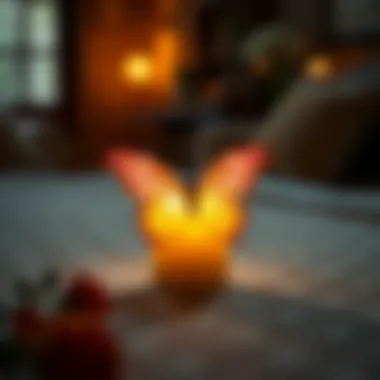
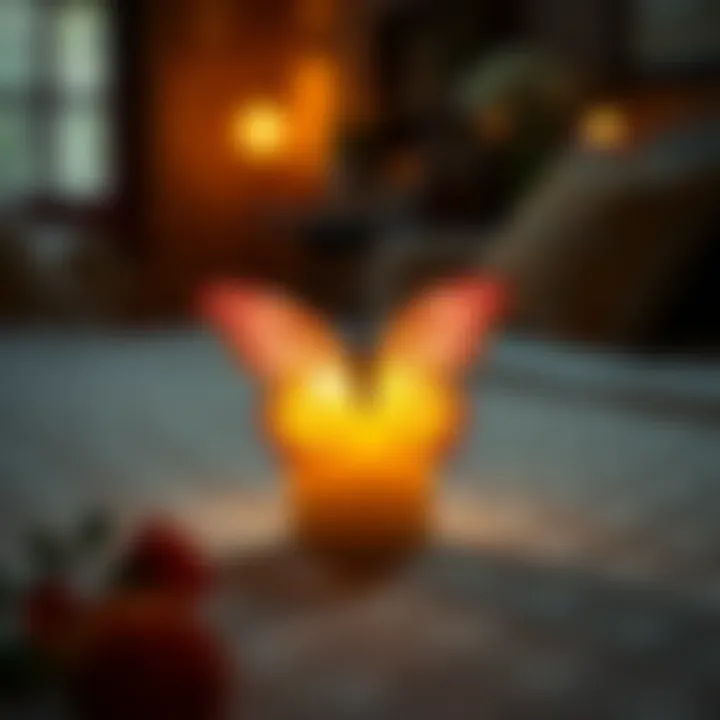
Decorative candles have become more than mere sources of light and fragrance; they are now seen as essential home decor items. The popularity can be attributed to several facets:
- Aesthetic Appeal: With intricate designs like butterfly shapes, these candles add a layer of sophistication to any space. Consumers are keen on products that enhance their home’s aesthetic, turning routine lighting into a decorative feature.
- Event Trends: Many people are now using decorative candles for occasions such as weddings, birthdays, and other celebrations. The right candle can set the mood, making it a popular choice among event planners and hosts alike.
- Customization: There is a growing demand for personalized candles. Consumers enjoy selecting colors, scents, and designs that resonate with their individual tastes.
- Social Media Influence: Platforms like Instagram and Pinterest have made it easy for consumers to discover and share beautiful candle designs, fueling an interest in unique shapes and creative presentations. Butterfly candles, with their delicate beauty, have captured the attention of this visually driven audience.
Sustainability in Candle Making
In an age of increasing environmental awareness, sustainability in candle making has become an important trend. Candle artisans are now faced with choices about materials that significantly affect both the quality of their products and the planet's health. Key considerations include:
- Materials: Many consumers are shifting towards eco-friendly options. Natural waxes, such as soy or beeswax, are being favored over paraffin, a petroleum byproduct. Candle makers are encouraged to experiment with sustainable waxes to meet this demand.
- Packaging: Beyond the candles themselves, sustainable packaging is also in demand. Recyclable or biodegradable materials can enhance the marketability of candles and appeal to environmentally conscious buyers.
- Minimalist Approach: There is a growing preference for simplicity in design. Consumers are leaning towards candles that reflect a minimalist ethos, often showing a preference for fewer additives and simpler shapes, like the butterfly.
- Transparency: Today's buyers want to know where their products come from. Artisans are benefitting from sharing their stories about sustainable practices, creating a sense of trust and connection that resonates with consumers.
"Understanding market trends in candle making isn't just about sales—it's about connecting with the values and desires of a discerning consumer base."
Community and Collaboration in Candle Art
Crafting candles isn't just a solitary pursuit; it thrives in the rich soil of community and collaboration. The world of candle making is vibrant and diverse, filled with artisans who are equally passionate about their craft and keen to share their experiences. This section delves into the various ways that collaboration enriches candle creation, enhances skills, and fosters innovation.
The Benefits of Community Engagement
When candle makers come together, whether through workshops or online forums, the exchange of knowledge becomes a powerful motivator. Here are some key benefits:
- Skill Enhancement: Learning from others can be a game changer. While some may be drawn to traditional text-based resources, nothing beats hands-on experience provided in communal settings.
- Networking Opportunities: Building relationships within the community can lead to fruitful partnerships. For instance, a group of candle makers might collaborate on a unique line of candles that celebrate local wildlife, incorporating the butterfly motif.
- Resource Sharing: From molds to wax types, resources can be shared or traded, reducing costs and expanding creative possibilities.
"In communities, the right spark can ignite a fiery passion for the craft that one could hardly achieve alone."
Workshops and Classes
Participating in workshops and classes is a fantastic way for both novice and experienced candle makers to sharpen their skills. These immersive experiences allow for practical learning and offer a chance to explore the butterfly candle mold in ways that individual practice might miss.
What to Expect in a Candle-Making Workshop
- Hands-On Practice: Workshops often provide all materials, enabling participants to dive right in. Makers can pour their first butterfly candle under the guidance of an expert.
- Tailored Instruction: Instructors can offer direct feedback, helping participants avoid common pitfalls and encouraging creativity.
- Community Building: Meeting others with similar interests provides a sense of camaraderie. These connections can lead to lasting friendships and support networks.
Finding Workshops
Look for local craft stores or community centers that may offer candle-making classes, or check websites like Eventbrite or Meetup for upcoming events. Social media platforms also have groups where local workshops get posted.
Online Communities for Candle Makers
The digital age has made it easier than ever for candle makers to connect and collaborate across miles. Online communities provide a platform for sharing ideas, troubleshooting issues, and celebrating successes.
The Role of Social Media
Social media platforms like Reddit and specialized Facebook groups serve as hotspots for discussions about candle making. Here, enthusiasts can:
- Exchange Tips: Users can post questions or tips regarding specific techniques, like how to achieve color blends in butterfly-shaped candles.
- Showcase Creations: Sharing finished products can inspire others and lead to constructive critique that helps refine skills.
- Join Challenges: Many online communities host themed challenges, like creating a candle that represents a season or event, promoting creativity and innovation.
Key Online Resources
- Reddit: Subreddits such as r/candlemaking allow users to post discussions, advice, and their latest works.
- Facebook: Look for candle-making groups; many are vibrant and active with members sharing insights.
- Pinterest: A fantastic visual platform for finding ideas, tutorials, and inspiration.
In essence, embracing both local and online communities not only enhances personal growth as a candle maker but also contributes to the richness of the craft itself. Building relationships and sharing knowledge in this way can lead to unexpected creativity and unimagined beauty in candle design.
Finale: The Art of Candle Crafting
As we reach the end of our exploration, it's essential to reflect on the art of candle crafting, especially when it comes to employing the intricate butterfly candle mold. This craft is not merely a task of pouring wax into a shape; it encompasses the deep connection between artistry and personal expression. By employing butterfly molds, artisans find themselves standing at the crossroads of tradition and innovation.
Reflection on Craftsmanship
Craftsmanship in candle making involves refining techniques and mastering materials. When it comes to butterfly molds, the finesse with which one can manipulate wax is both a skill and an art form. Artisans often view each creation as a testament to their dedication. The ability to create something aesthetically pleasing and uniquely personal is what drives many candle makers.
Consider the nuances involved: the choice of wax, the temperature at which it is melted, and the timing of pouring it into a mold. All these elements require careful consideration and precise execution. For those who embrace the labor of crafting with butterfly molds, there's a certain joy in revealing the finished product. Each candle serves as a reflection of one's personal style and meticulous attention to detail, showcasing not just an object but a narrative that resonates with those who see it.
"Craftsmanship is not just about skill; it's about passion and the heart behind each piece."
Embracing Creativity in Candle Design
Creativity is the cornerstone of any artistic endeavor, and candle making is no exception. The butterfly candle mold allows for an exciting canvas, enabling artisans to explore a multitude of designs. One can play with colors, textures, and even scents, transforming a simple candle into a multi-sensory experience.
This mold invites non-traditional approaches, such as layering different waxes or integrating additional embellishments within the candle. Techniques like embedding petals or glitters can bring an ethereal quality to the final product. The butterfly emerges not just as a design but as a symbol of transformation, echoing the creative journey of each maker.
Engaging with the design aspect helps artists communicate what's important to them, whether it’s sharing a personal story or contributing to a thematic collection. Utilizing the butterfly candle mold thus becomes a means of artistic expression—turning wax into a medium for storytelling, experience sharing, and even gifting.
In summation, the journey through candle crafting, especially utilizing butterfly molds, is both a meticulous process and a profound expression of creativity. It challenges the maker to hone their skills while allowing for an expansive range of design possibilities, making each candle not just a functional item but a piece of art.
For further insights into candle crafting techniques, visit Wikipedia or explore community discussions on platforms like Reddit. Whether you are new to candle making or have a wealth of experience, there's always something new to learn and create.















